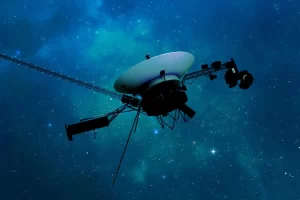Tokyo, 4 January, /AJMEDIA/
If you ever happen to fall through a wormhole in space, you won’t be coming back. It will snap shut behind you. But you may have just enough time to send a message to the rest of us from the other side, researchers report in the Nov. 15 Physical Review D.
No one has yet seen a wormhole, but theoretically they could provide shortcuts to distant parts of the universe, or to other universes entirely, if they exist (SN: 7/27/17). Physicists have long known that one of the most commonly studied types of wormholes would be extremely unstable and would collapse if any matter entered it. It wasn’t clear, though, just how fast that might happen or what it means for something, or someone, heading into it.
If you ever happen to fall through a wormhole in space, you won’t be coming back. It will snap shut behind you. But you may have just enough time to send a message to the rest of us from the other side, researchers report in the Nov. 15 Physical Review D.
No one has yet seen a wormhole, but theoretically they could provide shortcuts to distant parts of the universe, or to other universes entirely, if they exist (SN: 7/27/17). Physicists have long known that one of the most commonly studied types of wormholes would be extremely unstable and would collapse if any matter entered it. It wasn’t clear, though, just how fast that might happen or what it means for something, or someone, heading into it.
Science News headlines, in your inbox
Headlines and summaries of the latest Science News articles, delivered to your email inbox every Friday.
E-mail Address*
Your e-mail address
SIGN UP
Now, a new computer program shows how one type of wormhole would respond when something travels through it.
“You build a probe and you send it through” in the wormhole simulation, says Ben Kain, a physicist at the College of the Holy Cross in Worcester, Mass. “You’re not necessarily trying to get it to come back, because you know the wormhole is going to collapse — but could a light signal get back in time before a collapse? And we found that it is possible.”
Prior studies of wormholes have concluded that the cosmic passageways could potentially stay open for repeated trips back and forth, Kain says, provided they’re supported by a form of matter that’s so exotic it’s called “ghost matter.”
Theoretically, ghost matter responds to gravity in exactly the opposite way to normal matter. That is, a ghost matter apple would fall up from a tree branch instead of down. While allowed by Einstein’s theory of general relativity, ghost matter almost certainly doesn’t exist in reality, Kain says (SN: 2/3/21).
Nevertheless, Kain simulated ghost matter traveling through a wormhole and found that it caused the hole to expand as expected, rather than collapsing.
It was a different story with anything made of normal matter; that would trigger a collapse that pinches the hole closed and leaves something resembling a black hole behind, Kain’s simulation confirmed. But it would happen slowly enough for a fast-moving probe to transmit light-speed signals back to our side just before the wormhole completely closes.
Kain doesn’t imagine ever sending humans through a wormhole, if such things are ever found. “Just the capsule and a video camera. It’s all automated,” he says. It’ll be a one-way trip, “but we can at least get some video seeing what this device sees.”









































